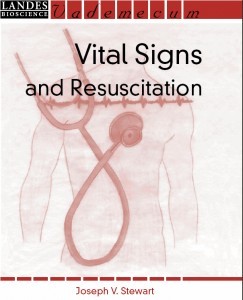
Vital signs are an essential part of the physical examination of almost every
patient (some crusty practitioners would say every patient). An important responsibility of the health professional is to take them accurately. A second, and
frequently neglected, one is to promptly notify someone when an abnormality
exists, such as the elderly male who presents with severe chest and back pain
and high systolic and diastolic pressures (possibly having an aortic dissection),
or the elderly person presenting with abdominal pain and hypotension (possibly
having a ruptured abdominal aortic aneurysm).
This book is written for anyone taking vital signs: doctor, resident, intern,
medical student, nurse, practical nurse, nursing assistant, home health practitioner, emergency medical technician (EMT), as well as medical office and nursing home personnel, the fire fighter and in some cases the dental and x-ray technician.
Book details:
Author:Joseph V. Stewart
Publisher:Landes Bioscience; Spiral edition (June 2003)
Pages:177
Size:3,80MB
Format:PDF
Download
mirror
No comments:
Post a Comment